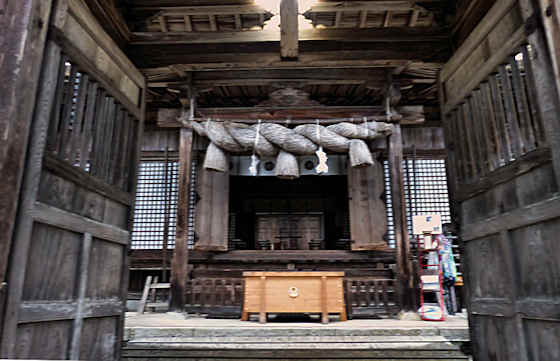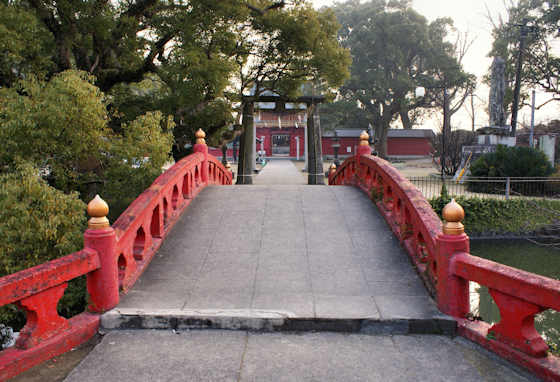It is said that the torii at Nakayama Shrine is unique. At the time of my visit i didn't notice, but now I can see it.
An Ox statue usually signifies Tenjin, the deified spirit of Sugawara Michizane, and he is not one of the main kami enshrined here, but there must be a secondary Tenjin shrine.
Nakayama Shrine is located north of Tsuyama in the area of Ichinomiya, so named because the shrine was the ichinomiya, highest-ranked shrine, in Mimasaka Province.
The Shinmon gate was relocated here from Tsuyama Castle when the castle was dismantled in the early Meiji Period.
Nakayama Shrine was founded in 707. For much of its history it was known as Chuzen Shrine.
The three main kami enshrined are Kagamitsukuri no kami, Ame no nukado no kami, and Ishikori-dome no mikoto, with the first and third of these being associated wit mirrors. In the meiji period the names were changed but then changed back after 1946.
The shrine was destroyed by the Amago Clan in 1533 when they invaded and took over the territory.
Amago Haruhisa rebuilt the shrine in 1559.
The main buildings date from this time and are considered to be nakayama-zukuri, a style unique to the immediate vicinity.
A large sacred keyaki tree, zelkova in English, is said to be 800 years old. It has a trunk diameter of 8 meters.






























































